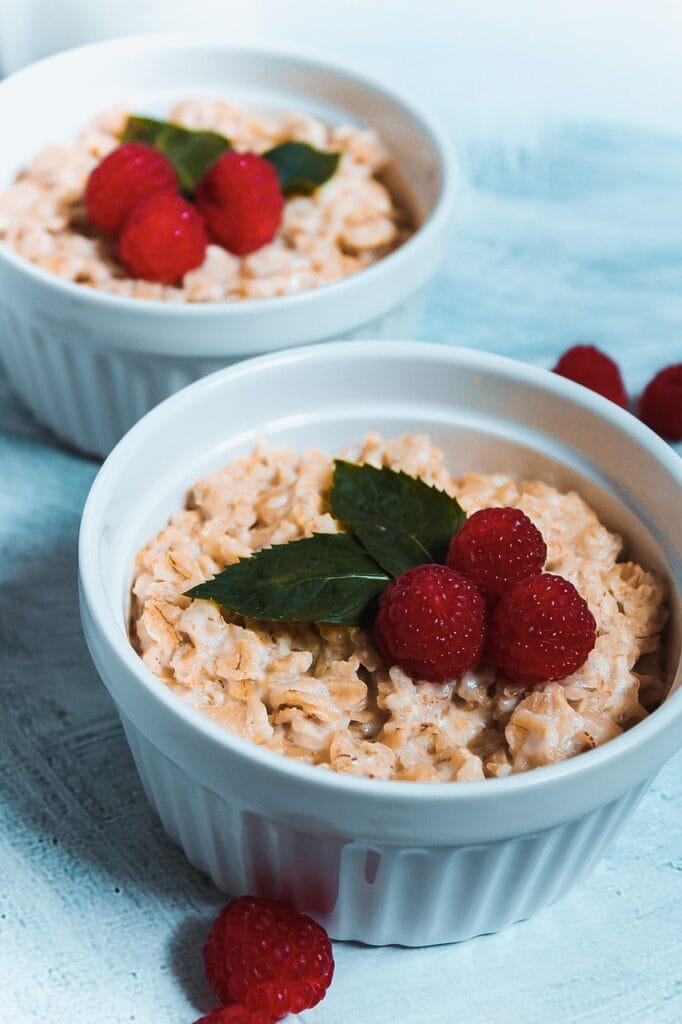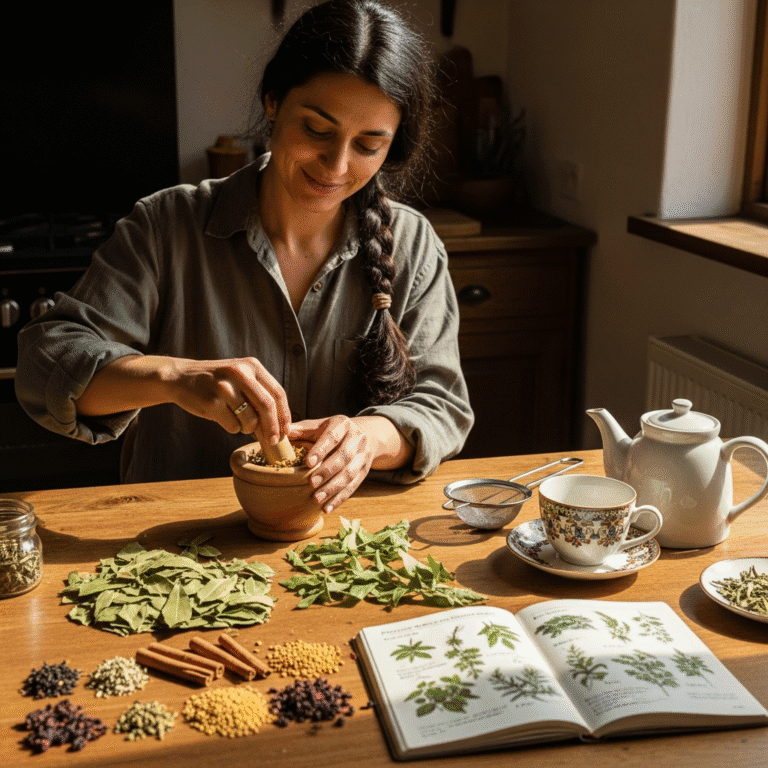FREE SHIPPING OVER $50
I Ate Oatmeal Every Day for 2 Weeks—Here’s What Shocked Me Most

I’ve always considered myself a pretty healthy eater, but like many people, my mornings were a chaotic mix of grab-and-go choices. Some days it was a bowl of sugary cereal. Other days, I’d just grab a piece of toast and run out the door, only to find myself starving and reaching for a cookie by 10 a.m. This erratic breakfast routine led to constant mid-morning energy crashes, cravings for unhealthy snacks, and a general feeling of not being in control of my day.
I’d heard all the claims about oatmeal: it’s a superfood, great for your heart, packed with fiber. But was it really a game-changer? I was skeptical. It seemed too simple, too… boring. But with a desire to find a sustainable, effective way to improve my morning routine and my overall nutrition, I decided to put it to the test. The challenge was simple: eat oatmeal for breakfast every single day for two weeks straight.
The “Before”: A Typical Week of Breakfasts
Before I embarked on my two-week oatmeal challenge, my mornings were a mix of convenience and sugar. On a good day, I’d have a scrambled egg. On a bad day, it was a bowl of my favorite sugary cereal, which I’d convince myself was “healthy” because it had a vitamin label. Many times, especially when I was in a hurry, I’d skip breakfast entirely. This was a habit I knew wasn’t helping my health, but it was one I couldn’t seem to break.
The consequence of this inconsistent routine was a rollercoaster of energy. My sugary cereal would provide a quick rush, but an hour later, I would inevitably feel a crash. My stomach would be rumbling, my focus would be gone, and all I could think about was the next thing I could eat to get a quick boost. It was a vicious cycle that left me feeling perpetually hungry and unfocused. I knew my gut health wasn’t in a great place either, with frequent feelings of bloat and discomfort. I needed a change, and the humble oat seemed like the most logical place to start.
The 14-Day Oatmeal Challenge: The Rules
My plan was straightforward. For two full weeks, I would eat a bowl of oatmeal for breakfast every morning. I knew that sticking to plain oats every single day would be a recipe for failure, so I decided to vary the toppings to keep things interesting. This was key. It allowed me to explore different flavors and textures, ensuring that this simple breakfast felt new and exciting each day.
Some mornings, I’d mix in fresh berries and a handful of almonds for a healthy fat boost. Other mornings, I would add a spoonful of peanut butter and a sprinkle of cinnamon. On another day, I’d chop up a banana and a few walnuts. The possibilities were endless, and it made the challenge surprisingly enjoyable.
The type of oats I chose also mattered. I used rolled oats for a mix of convenience and texture. I prepared them with water or a splash of unsweetened almond milk to keep the sugar content low, focusing on natural sweetness from fruits or a small drizzle of maple syrup. The goal was to prove that a consistent, simple change could have a big impact, and I was about to find out just how true that was.
What Shocked Me Most: The 3 Unexpected Results
I began the challenge with low expectations. I was hoping for a slight boost in my energy, maybe a small change in my digestion. What actually happened was so much more profound. By the end of the two weeks, I was genuinely shocked by the complete transformation of my body and mind.
1. My Gut Health Drastically Improved
This was the first and most noticeable change. Within just a few days of starting the challenge, the persistent bloating and discomfort I had grown used to began to disappear. I felt lighter and more regular than I had in years. This was all thanks to one key component of oatmeal: soluble fiber, and specifically, a type called beta-glucan.
Beta-glucan is a powerful prebiotic. It’s a type of fiber that isn’t digested by your body, but instead, travels to your gut where it feeds the beneficial bacteria in your gut microbiome. This is what led to the noticeable improvements in my digestion. I was providing my gut with the fuel it needed to thrive, and the results were almost immediate. This was a huge win, as I had been dealing with these digestive issues for a long time without a clear solution.
2. My Energy Levels Soared and Cravings Disappeared
My pre-oatmeal mornings were a predictable roller coaster of energy spikes and crashes. But after just a few days on the oatmeal diet, that all changed. I no longer felt the need to grab a sugary snack by 10 a.m. My energy felt stable and sustained throughout the morning, allowing me to stay focused and productive at work.
The reason for this is, again, the incredible power of fiber. Oatmeal is a complex carbohydrate, meaning it breaks down slowly in your body. This slow-release of energy prevents the sudden spikes in blood sugar that are common with sugary cereals or pastries. The beta-glucan in particular forms a gel-like substance in your digestive tract that slows down the absorption of glucose. This kept my blood sugar levels steady, which in turn eliminated my mid-morning energy crashes and those intense cravings for sugar. The protein in the oatmeal, along with the nuts and seeds I added, also contributed to a feeling of fullness and satiety that lasted for hours.
3. My Skin and Mood Got a Noticeable Boost
This was, by far, the most surprising result of my experiment. I had not started the challenge to improve my skin or my mood, but the changes were undeniable. My skin looked clearer and felt less inflamed, and my daily mood felt more stable and positive.
The scientific link between gut health and skin health is well-established. By improving my digestion and reducing inflammation in my gut, I was also reducing the systemic inflammation that can manifest as skin issues. Additionally, the balanced blood sugar levels I was now experiencing played a role. Fluctuations in blood sugar can lead to hormonal imbalances, which can often affect skin clarity. Beyond that, the stability of my energy and the lack of sugar-driven mood swings meant that I felt more even-keeled throughout the day, which had a huge impact on my overall mental state.
A Deeper Dive: The Science Behind Oatmeal’s Power
The success of my two-week challenge wasn’t just a coincidence. It was a direct result of the incredible nutrition packed into every single oat.
The Soluble Fiber and Beta-Glucan Connection
We’ve already touched on it, but beta-glucan deserves more credit. It’s a type of soluble fiber that forms a viscous, gel-like substance when mixed with water. This gel is what provides that incredible feeling of fullness, regulates blood sugar, and, importantly, helps lower LDL (“bad”) cholesterol. It achieves this by binding to cholesterol in the digestive tract, thereby preventing it from being absorbed into the bloodstream. This is why organizations often recommend eating oatmeal for heart health.
Protein and Essential Micronutrients
Beyond the famous fiber, oatmeal is a surprisingly good source of protein for a grain. One cup of cooked oats contains around 6 grams of protein, which, when paired with toppings like nuts or Greek yogurt, turns it into a genuinely complete and satisfying meal.
Oats are also packed with essential micronutrients that are vital for overall health. A single serving provides significant amounts of:
- Manganese: Essential for bone health and metabolism.
- Phosphorus: Plays a key role in energy production and bone structure.
- Magnesium: Involved in over 300 bodily processes, including muscle and nerve function.
- Iron: Crucial for transporting oxygen throughout the body.
The Power of Avenanthramides
Oats are unique because they contain a specific type of antioxidant called avenanthramides. These powerful antioxidants are known for their anti-inflammatory properties and can help reduce itching and irritation, which may explain some of the positive changes I noticed in my skin. They have also been shown to help lower blood pressure and protect against heart disease.
Making Oatmeal Work for You: My Top Tips
My journey taught me that oatmeal doesn’t have to be a boring, bland bowl of mush. It’s an incredibly versatile canvas for a huge variety of healthy and delicious toppings.
- Go for Rolled or Steel-Cut Oats: Instant oats are highly processed and can have a higher glycemic index. Rolled or steel-cut oats retain more fiber and will provide that sustained energy you’re looking for.
- Avoid Pre-packaged, Flavored Packets: These often contain a lot of added sugar and artificial flavors. It’s much healthier and more cost-effective to buy plain oats and add your own flavor.
- Don’t Be Afraid to Experiment with Toppings: This is what made the challenge sustainable for me. Get creative with what you have on hand. Think:
- Fruits: Fresh berries, sliced banana, apples, or dried fruits like raisins.
- Nuts and Seeds: Almonds, walnuts, pecans, chia seeds, flax seeds, or pumpkin seeds.
- Spices: Cinnamon, nutmeg, or a pinch of pumpkin pie spice.
- Proteins and Fats: A scoop of protein powder, a spoonful of nut butter, or Greek yogurt.
- Prep Ahead: You can make a large batch of overnight oats or baked oatmeal at the beginning of the week for an even quicker breakfast. This ensures you never have an excuse to skip your healthy meal.
The Verdict: My Final Thoughts on the Oatmeal Challenge
Two weeks seemed like a long time to commit to one breakfast, but the results were so profound that it was easy to stick with. The benefits I experienced—from improved gut health and stable energy to a clearer mind and better mood—were a direct result of one simple, consistent change.
The oatmeal challenge taught me a valuable lesson in nutrition: you don’t need complicated diets or expensive supplements to make a real difference in your health. Sometimes, the most powerful solutions are the simplest. While I no longer eat oatmeal every single day, it has become a cornerstone of my morning routine, and I now look forward to my nutrient-packed bowl of oats every chance I get. It’s a small change that has made a lasting impact on my life, and I’m confident it can do the same for you.
Related Articles
- Sourdough or Whole-Wheat? A Gut Doctor Reveals the One Bread He Eats Daily
- Say Goodbye to Hormonal Belly: Experts Pinpoint 4 Foods to Eliminate for a Flatter Stomach (Yes, Even Dairy!)
- Defy Your Aging Gut: An Expert’s 5-Step Plan to Revitalize Your Microbiome & Feel Younger
- Gut-Friendly Carbs: The 6 Foods Dietitians Recommend To Help You Poop
- Chocolate, Cheese & Coffee? Doctors Launch NEW Gut Health Diet You Won’t Believe!







